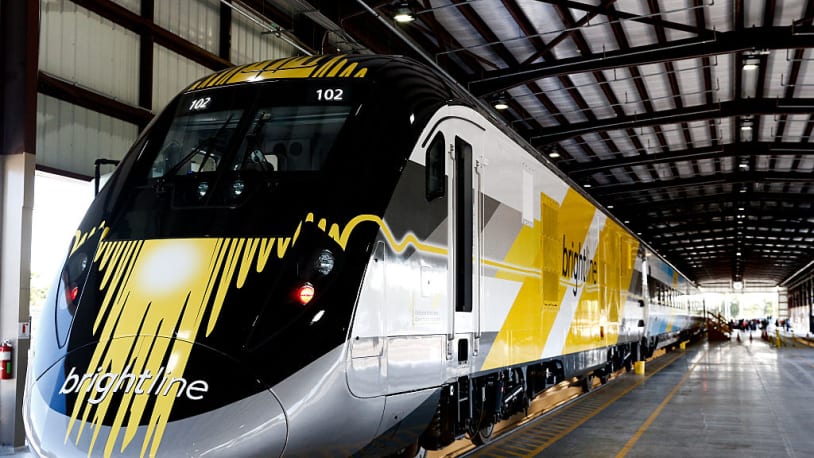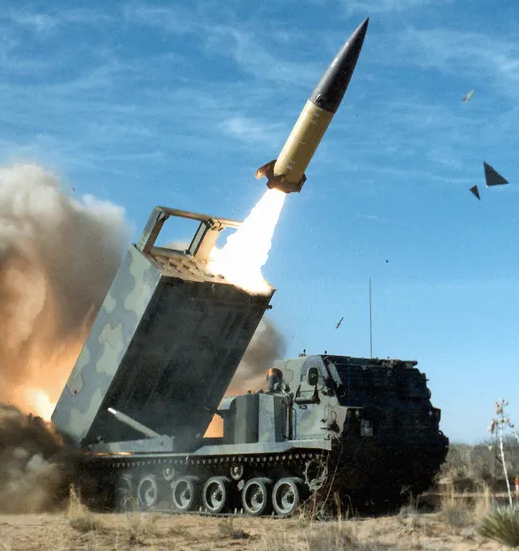Is America’s quest for high-speed trains finally picking up steam?::New projects in California, Texas, and Florida are a sign that the United States is finally getting serious about modernizing its commuter railway system.
At least with younger folk yeah. Only people that hate trains are boomers and weirdos who think gasoline is the second manliest thing other than trump. It’s a huge project though, don’t know if I’ll ever live to see New York connected to Texas by high speed rail
Considering railroads have done over $200 billion in stock buybacks (about the cost for coast to coast high speed rail) I think it’s very possible, we just have to nationalize.
It’s very profitable to run a railroad into the ground and push as much shipping to trucks as you can.
Only people that hate trains are boomers and weirdos who think gasoline is the second manliest thing other than trump.
Mass transit has also burned quite a few people with reliability. The train not showing up on time was regular enough I had to stop using it to go to work. There is only so many times you can be late to work before it becomes your fault for not fixing the issue; in my case, by no longer taking the train and driving instead.
Removed by mod
The problem is that Amtrak doesn’t own most or even any of those rails, instead having to pay for the right to use them. The reason why this is a problem is that it’s hard to upgrade rails to high speed when you don’t own them. Amtrak trains also often have to stop and give passage to freight trains, which is unlike what you’d see in Japan where passenger trains are on their own, dedicated rails.
Even in Japan (basically the gold standard for public transportation) you are changing trains pretty regularly, have a LOT of stops along the way, and may need to do the last leg on a bus route that only runs twice a day.
In Europe it considered the worst PT. Bus once a day on a tiny island? Sounds insane. Japan still base their PT operation on schedules instead of intervals.
have a LOT of stops along the way, and may need to do the last leg on a bus route that only runs twice a day.
No… Even regular intercity train Moscow-Belgorod train makes about 5 stops in regional centers. High-speed like Sapsan(or a lot of similar trains) that stops only on last stop 650 km apart.
I’ve been hearing these stories for decades. I won’t hold my breath.
America well adopt high speed trains en masse the year Linux becomes mainstream
So we need Valve to make gaming on trains better?
2026?
It still blows my mind that there’s only about 50 miles of “high speed” (greater than 125mph) transit in the US, and that’s only in a small pocket in tbe Northeast. For reference, the EU has over 2,200 mi of high speed rail in half the physical size running at up to 186mph.
Due to the large physical size of the US, aircraft have out competed rail. Cities just are not nearly as close in the US.
The US is really only bigger than Europe if you count Alaska. I doubt there would be high-speed rail to Alaska anytime soon.
The majority of Europe can fit into just the central area of the US. Aircraft scale better with distance and is the core reason aircraft have succeeded so well in the US despite the push for more trains for decades. It’s also why you do see some trains being built in CA, FL, and the NE, as the cities there are closer together, making the idea viable.

You do know that the Nordic countries are part of Europe, right? They stretch way up north past the edge of the image. They also happen to have some of the most advanced rail systems in the world.
most advanced rail systems in the world
As a Scandinavian: LOL
Sure, it may not be perfect, but it tells you a lot about the state of rail in the rest of the world. It’s really only places like Japan and maybe China that leads the way.
Most of Europe and large parts of Asia has good railways compared to USA. It’s not that the developed world has good railway systems, it’s just that USA has a completely broken public transport system. But planes and trucks go brrr
France and Switzerland. First has trains as fast as airplanes, seconds has good network.
I don’t think Europeans understand what space is. They are all crammed in together like tuna.
Removed by mod
I have, on numerous occasions, had to throw water on European’s plans to visit all of the big sites in the US in one visit. Wanting to see the Grand Canyon, the Everglades and DC in the same visit is not terribly practical. My advice has been to pick a region and see everything there. Pick a different region of the US on your next visit.
What was throwing them off was a day-trip can drive across several European countries, but will only get you through a few states in the US.
On the other hand, I have, on numerous occasions, had to throw water on American’s plans to visit big sites in Europe in one visit. “Let’s do Amsterdam and Copenhagen and then Paris, Rome, and Barcelona.” In one week. Yeah, not gonna happen.
Reliability is absolutely an issue that turns lots of people off - Just yesterday I had to switch to a different line in chicago bc of a delay. But to say that the “large physical size of the US” has allowed aircraft to out compete rail is disingenuous. It is so because it ignores the reality of strong city pairings for rail corridors and such line of thinking doesn’t often take into account the boarding process’ impact on total journey time. A 45 minute flight is going to require you to get there an hour early for security processing and boarding. You don’t just show up 5 minutes before the plane takes off, yet that reality is true for the choo. Even then you still need to offboard, stop by baggage to get your goods and really hope they didn’t lose them and have them unpacked in a few minutes. These bottlenecks just do not exist for rail. You get on in the city and get off right in the city. 10 minute taxi to your hotel and bob’s your uncle. You simply cannot say the same for any metropolitan airport (Except metro ports that have a dedicated line from the airport to the city center). It won’t be viable everywhere but that’s not the point. The point is to remove the systemic barriers that prevent market competition where it can thrive (precision rail scheduling in many areas has made it physically impossible for freight to yield to passengers) and to provide reliable, predictable transportation not to the whims of traffic or those who can afford to purchase a vehicle.
Good transit utilizes the best modes for the best routes and this is why high speed rail is really starting in cali and the texas triangle - It’s always gonna be faster for rail between two urban areas right next to each other than it is to fly, despite the fact that flying is far more common between such city pairs when people want to avoid driving or need to be there in the city center fast.
I’m far from an expert but I know for fact the United States has many cities that could be covered by HSR that are closer or the same distance as Tokyo -> Kyoto (one of the first HSRs); Keep in mind the shinkansen route is separate from the commuter route and only has a couple of stops. It’s not like they reused significant portions of commuter rail, they built a new link.
I’ll leave some reading here for more info because there’s a lot of worthwhile knowledge to try and understand in projects like these:
CityNerd - Urban planner guy who knows a thing or two about transit
City Pairings for HSR by 2050 - More about city pairings, which is specifically worth focusing on for HSR bc that’s how lines get started
America was quite literally built on the railroads. We take for granted the interstate highway system and don’t realize its exorbitant cost, but if we had given rail even half the attention we gave the interstate since its inception rail would certainly be competitive. The interstate is national, so why not the rails too? It’s not like CSX actually has to compete with BNSF - they don’t serve the same area and are inherently monopolies. A business in Montana wanting to use rail for freight has to use BNSF because they’re the only freight rail operating and owning lines there. For Denver you’re stuck with UP for the same reasons. Most areas are lucky to have a duopoly, and anywhere there is competition is area that has several rail lines merging together, which also makes it perfect for transit.
Per Amtrak (Pg 2, 2021 Report Card) freight rail caused 900,000 minutes of passenger delay across all lines, and in 2023 (Through April, Host Railroad report pg 4) the major freight carriers were responsible for 67.8% of total delays, despite freight being legally obligated to yield to passenger trains most major operators generally ignore that law (Pg 2, Amtrak 2021 report).
So what’s the point? Trucking companies don’t get to clog the interstate and force passenger cars to yield so deliveries are faster. Passenger planes don’t yield to FedEx/UPS/Amazon and circle above landing strips so freight planes get to land first. As a society we don’t generally desire to systematically degrade the quality of transit, but we do so for rails because we’re conditioned to believe that they are outmoded and just don’t work for passengers. If that was true, no where in the world would they be used. Europe and Asia do in fact have more, higher density population centers but this fact does not preclude the capability of passenger rail in America, and we shouldn’t believe in this logical fallacy that rail is outcompeted or out moded because of density. China is an interesting example, in that they too have a massive geography that is nearly as varied as America, and not every single city is inherently massive and super dense. Of course being a command economy makes it easy to do infrastructure projects but the viability of those projects doesn’t change just because a different government is involved. While we were buying into the hype of hyperloop and slowing down California’s HSR project, they built a solid 1000km+ of HSR where there originally was not.
We can do it, in many places HSR is very competitive, and it is economically viable. There does in fact exist a sweet spot of transit, long neglected in the market, where driving is just a bit too cumbersome, but taking a plane isn’t any faster.
Of course, I’m just a radical who hates driving and loves trains because of the freedom to goon around with my friends in the city and bar hop without having to DUI or spend $45 on an uber.
subsidies for roads and air vastly outnumber train subsidies and planning decisions are made around grant funding. Until the inflation reduction act there was zero grant funding for public trainways.
Part of this is the US government is just 5 oil companies in a trenchcoat
Road subsidies are 100%
If you have to ask, the answer is no
What happened to hyperloop? 🤣 🤣
Turns out making a low-pressure vacuum tube that spans 100+ miles, but lets small pods full of people be inserted on demand, was way harder and more expensive than predicted, making it poorly price competitive with existing technology like high-speed rail. For some reason.
What do you mean? Hyperloop is still in development.
At this rate, fusion energy will be here first.
That’s more because fusion has had a couple of amazing breakthroughs recently
https://www.cnn.com/us/live-news/nuclear-fusion-reaction-us-announcement-12-13-22/index.html
Yeah, sure…
So you think this is fake? Honest question.
Where is the tunnel?
We can only hope.
I won’t hold my breathe until there is major progress, but all these plans will get thrown in the trash if Republicans regain the White House and if Democrats don’t either take control of Congress or at least make gains. Republicans have been trying to kill of Amtrak and any US rail improvements for decades now.
Like with seemingly everything else, if Republicans are involved, they will stubbornly try to hold us back come hell or high water.
Considering all the derailments we have had this year and “big train” cutting staffing I would imagine this isn’t happening or we will have 3 MCIs a year.
Brightline is cool, but not cool. It’s shiny, new, has all the things you want to see on high speed rail but didn’t feel like high speed rail.
High-speed trains? Finally! Took 'em long enough! Hope they don’t screw it up like everything else. truesizeofcountries
Removed by mod









